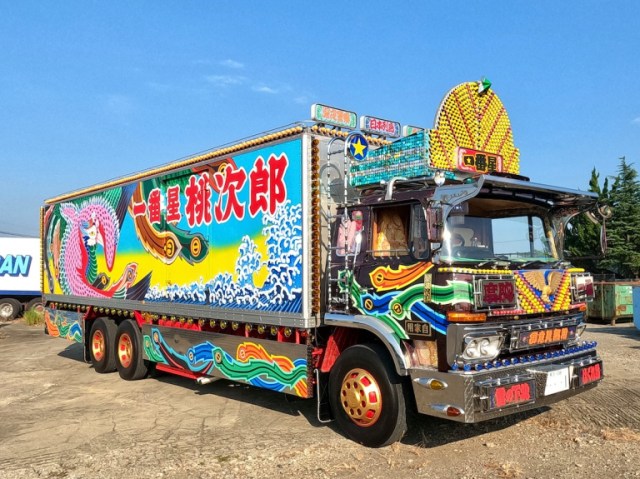
The hero car from “Truck Guys” is now a real-life hero too.
One of the more colorful quasi-English words in the Japanese language is dekotora, and, fittingly, the term describes some very colorful things. A mashup of the Japanese pronunciations of “decoration” and “truck,” dekotora are gloriously gaudy cargo trucks, covered in lights, ornaments, and massive murals in a style evocative of ukiyo-e paintings, Japanese tattoos, or fishermen’s flags.
Every one of these personalized trucks is distinct, but one of the most famous of all is the Ichibanboshi (“First Star”), and we recently got to see the king of the dekotora with our own eyes.
Dekotora are a whole subculture unto themselves, and their ability to command attention and captivate imaginations inevitably led to a series of dekotora movies called Truck Yaro (“Truck Guys”), and the Ichibanboshi was the truck of its hero, long-haul trucker Momojiro Hoshi. In each film, Momojiro would meet a beautiful woman who needed his help, often in a different region of Japan from his last adventure. Every time, he’d fulfill her request, then have to say a bittersweet goodbye as she began her happily-ever-after with another man. It’s sort of a more rough-around-the-edges version of Japan’s Otoko wa Tsurai yo movie series, or maybe you could think of it as something like a 1970s blue-collar Japanese Fast and Furious.
▼ A scene from one of the Truck Yaro films, in which a trucker beats up the construction crew building an unwanted nuclear power plant, then smashes up the site using his truck with a decorative shark on its roof.
https://youtu.be/VeMhcq38sbg#t=15s
They made a total of 10 Truck Yaro films between 1975 and 1979, all steeped in the pathos of post-World War II, pre-Bubble Economy Japan. After the series wrapped, the Ichibanboshi bounced around between a few private owners, and since 2014 it’s been in the hands of Saitama Prefecture resident Junichi Tajima.
With more than 30 years since it had last appeared on screen, the Ichibanboshi wasn’t exactly ready for its close-ups when Tajima bought it. So he decided to restore it to its former glory, and he went all out. Because this is the original Ichibanboshi, not a replica, Tajima went so far as to track down Tadayuki Kuwana, the man who’d served as art director for all 10 Truck Yaro films back in the ‘70s at film studio Toei, so that he could supervise the repainting of the truck’s murals to their original standards.
▼ And yes, that includes the gigantic calligraphy on the trailer’s roof that reads “A man’s journey is a solitary one.”
For maximum authenticity, they even made sure to use the same type of paint they did in the 1970s, so that it would have the identical thickness and level of luster. The difference between more modern paints is small enough that most people probably wouldn’t have been consciously aware of it, but true Truck Yaro fans would have known that something was off compared to their memories of how the Ichibanboshi looked in its heyday.
Also part of the restoration: making sure every single one of those lights is in proper working order.
▼ Yes, that is a chandelier in the driver’s cab.
▼ The truck has its own garage to keep it looking nice and clean.
Tajima’s desire to own and restore the Ichibanboshi isn’t just because he’s a Truck Yaro fan, though. He’s also the head of the Zenkoku Utamarokai, a charity group that helps with raising money for and delivering emergency supplies to victims of natural disasters such as earthquakes and floods. The Ichibanboshi helps out on the former front by making appearances at charity fundraising events, like the one shown here.
▼ Tajima, holding an Ichibanbosh charity calendar
In a way, the Ichibanboshi’s new life of helping those in need mirrors the role it played in the Truck Yaro movies, showing that it’s not just human actors who have the ability to give something back after they make it big.
Related: Zenkoku Utamarokai official website, YouTube channel
Images ©SoraNews24
● Want to hear about SoraNews24’s latest articles as soon as they’re published? Follow us on Facebook and Twitter!
[ Read in Japanese ]

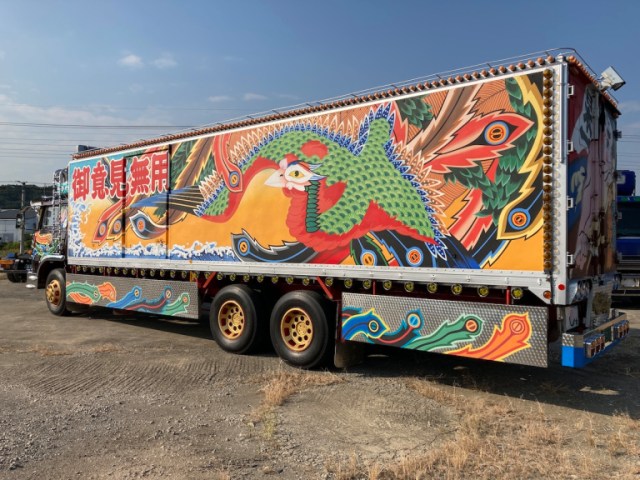
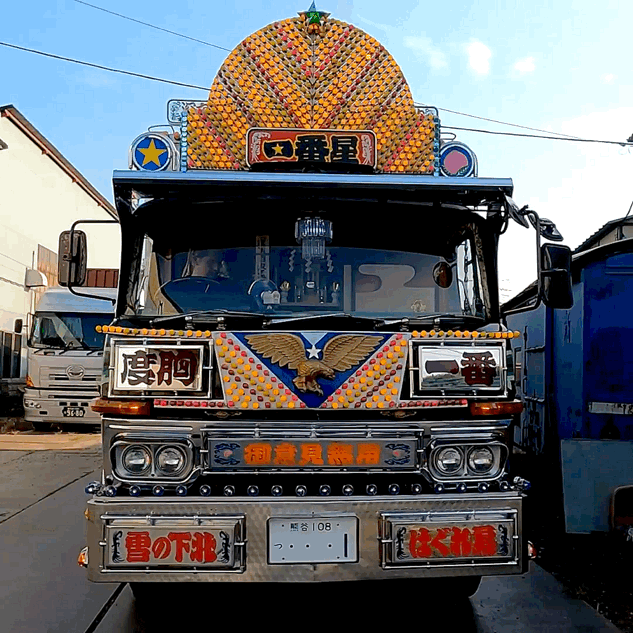
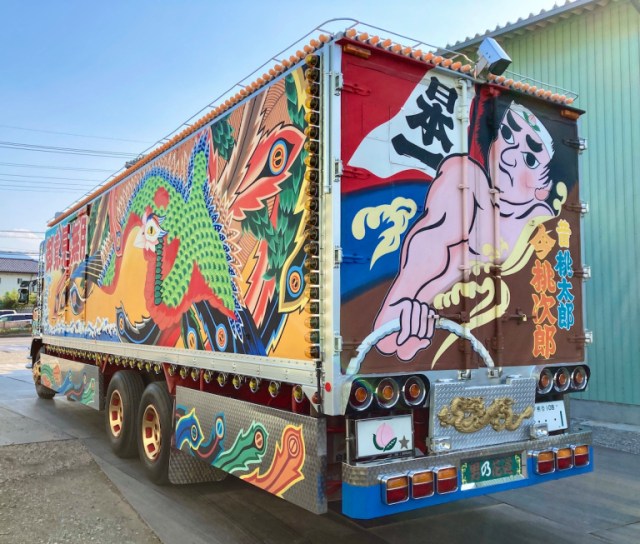
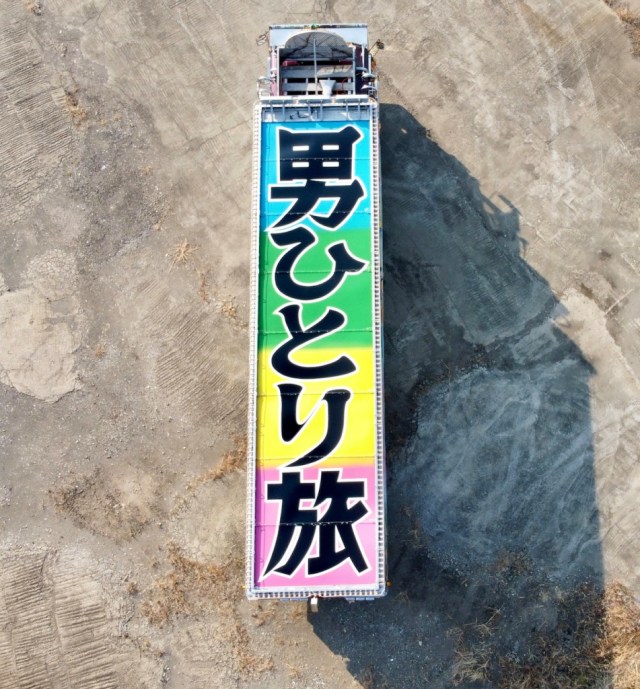
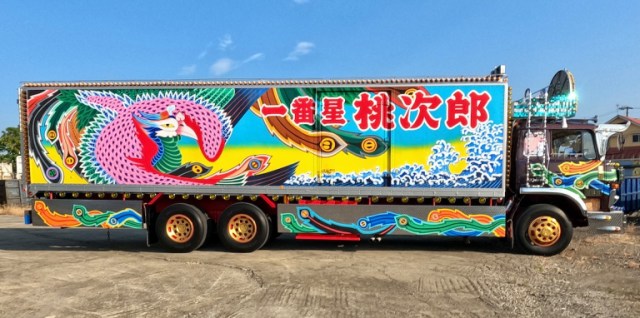
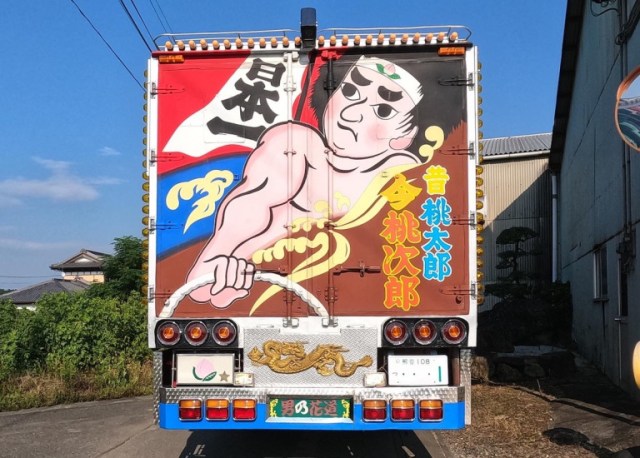
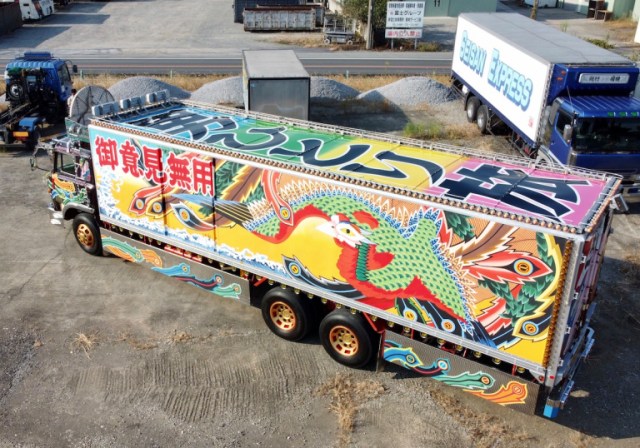
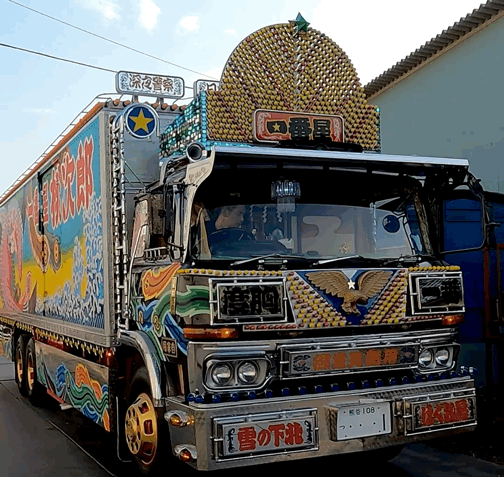
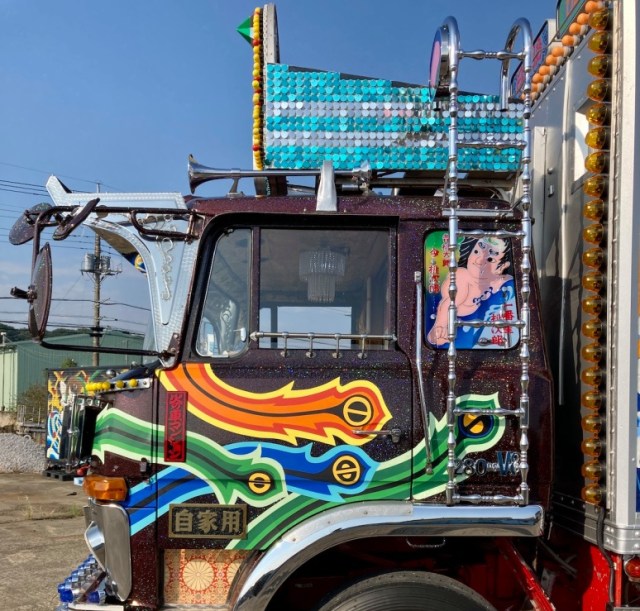

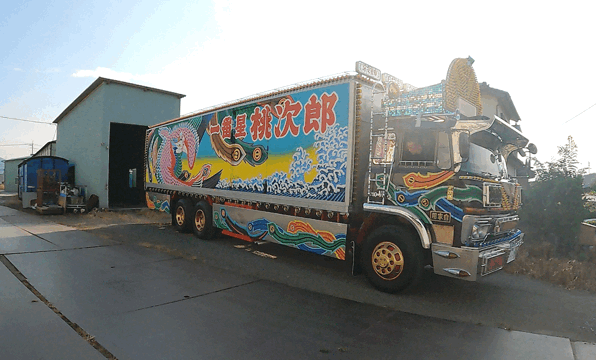
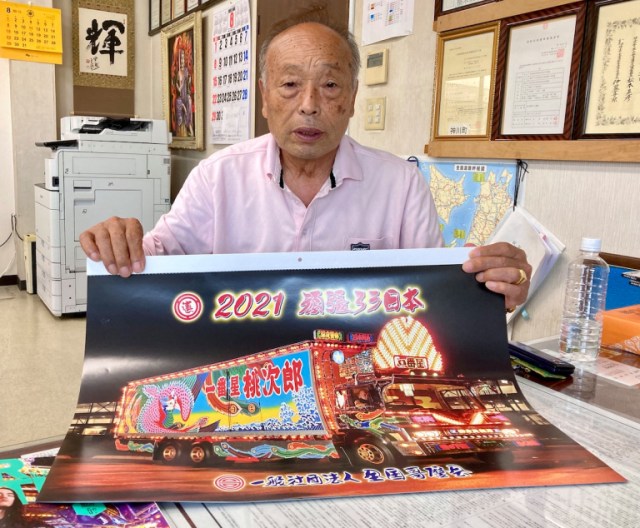
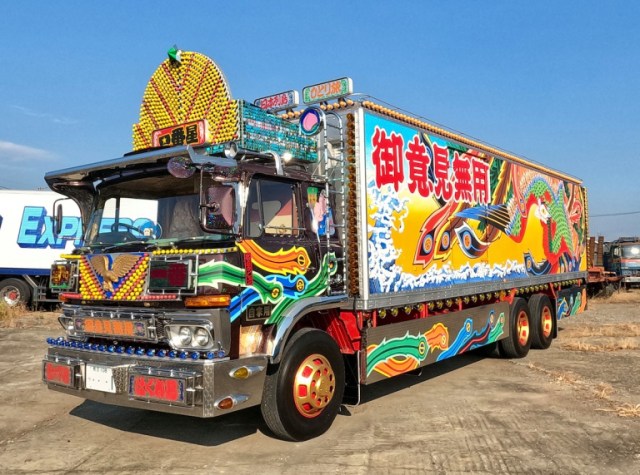
 Kicking off the new year with a gathering of the most famous dekotora in Japan
Kicking off the new year with a gathering of the most famous dekotora in Japan National dekotora association mints NFTs for charity and to support the art of decorating trucks
National dekotora association mints NFTs for charity and to support the art of decorating trucks We spot the legendary dekotora Aki Kannon, dedicated to actress and singer Aki Yashiro
We spot the legendary dekotora Aki Kannon, dedicated to actress and singer Aki Yashiro Ramen and dekotora come together at this restaurant in Japan
Ramen and dekotora come together at this restaurant in Japan China’s don’t-go-to-Japan warning seems to be affecting Osaka’s Namba and Dotonbori neighborhoods
China’s don’t-go-to-Japan warning seems to be affecting Osaka’s Namba and Dotonbori neighborhoods Studio Ghibli holiday wreath adds a touch of Kiki cuteness and good fortune to your home【Photos】
Studio Ghibli holiday wreath adds a touch of Kiki cuteness and good fortune to your home【Photos】 One Piece devil fruit ice cream coming back to Baskin-Robbins Japan
One Piece devil fruit ice cream coming back to Baskin-Robbins Japan Japan’s Self-Defense Forces take “radio calisthenics” to an interesting new level
Japan’s Self-Defense Forces take “radio calisthenics” to an interesting new level Yakuza-themed love hotel rooms! Great for couples, friends, and business meetings, owners say
Yakuza-themed love hotel rooms! Great for couples, friends, and business meetings, owners say Godzilla-shaped ice cream on sale in Tokyo near the sight his most adorable rampage
Godzilla-shaped ice cream on sale in Tokyo near the sight his most adorable rampage Step back in time with Japanese-themed rooms at rare vintage love hotel in Osaka【Video】
Step back in time with Japanese-themed rooms at rare vintage love hotel in Osaka【Video】 Flex and pose your way to fitness with the JoJo’s Bizarre Adventure exercise program!【Video】
Flex and pose your way to fitness with the JoJo’s Bizarre Adventure exercise program!【Video】 Japan’s Shinkansen trains are getting a Super Mario makeover【Pics】
Japan’s Shinkansen trains are getting a Super Mario makeover【Pics】 Sailors Uranus, Neptune, and Pluto join Sailor Moon in getting cool new anime pens
Sailors Uranus, Neptune, and Pluto join Sailor Moon in getting cool new anime pens Japan’s human washing machines will go on sale to general public, demos to be held in Tokyo
Japan’s human washing machines will go on sale to general public, demos to be held in Tokyo Nintendo’s Kirby now delivering orders at Kura Sushi restaurants, but not in Japan
Nintendo’s Kirby now delivering orders at Kura Sushi restaurants, but not in Japan Yoshinoya adds first-ever chain-wide ramen with new beef and pork-broth noodle hot pot meals
Yoshinoya adds first-ever chain-wide ramen with new beef and pork-broth noodle hot pot meals Japan considering raising international traveler departure tax even more than previously reported
Japan considering raising international traveler departure tax even more than previously reported Is China’s don’t-go-to-Japan warning affecting tourist crowds in Shibuya’s Don Quijote?
Is China’s don’t-go-to-Japan warning affecting tourist crowds in Shibuya’s Don Quijote? Studio Ghibli stamps lift your spirits with motivational phrases from Totoro
Studio Ghibli stamps lift your spirits with motivational phrases from Totoro Is China’s don’t-go-to-Japan warning affecting tourist crowd sizes in Nara?
Is China’s don’t-go-to-Japan warning affecting tourist crowd sizes in Nara? Japanese train company is letting fans buy its actual ticket gates for their homes
Japanese train company is letting fans buy its actual ticket gates for their homes Japanese town suing resident for being a jerk
Japanese town suing resident for being a jerk New fish discovered and named “Vanderhorstia supersaiyan” for obvious reasons
New fish discovered and named “Vanderhorstia supersaiyan” for obvious reasons Starbucks Japan unveils new Christmas goods and a rhinestone tumbler that costs 19,500 yen
Starbucks Japan unveils new Christmas goods and a rhinestone tumbler that costs 19,500 yen Real-world Nausicaa Ghibli anime glider completes its final flight in Japan【Video】
Real-world Nausicaa Ghibli anime glider completes its final flight in Japan【Video】 Brand-new Pokémon park opens in Japan with larger-than-life-size Lapras【Photos】
Brand-new Pokémon park opens in Japan with larger-than-life-size Lapras【Photos】 Unique inclined elevator in Japan leads to a town that inspired Studio Ghibli’s Spirited Away
Unique inclined elevator in Japan leads to a town that inspired Studio Ghibli’s Spirited Away Is China’s don’t-go-to-Japan warning affecting tourist crowds in Tokyo’s Asakusa neighborhood?
Is China’s don’t-go-to-Japan warning affecting tourist crowds in Tokyo’s Asakusa neighborhood? The 10 best day trips from downtown Tokyo【Survey】
The 10 best day trips from downtown Tokyo【Survey】 Naturally brown-haired Osaka student sues government for forcing her to dye her hair black
Naturally brown-haired Osaka student sues government for forcing her to dye her hair black Japanese government considering tripling departure taxes to combat overtourism
Japanese government considering tripling departure taxes to combat overtourism Survey asks foreign tourists what bothered them in Japan, more than half gave same answer
Survey asks foreign tourists what bothered them in Japan, more than half gave same answer Japan’s deadliest food claims more victims, but why do people keep eating it for New Year’s?
Japan’s deadliest food claims more victims, but why do people keep eating it for New Year’s? We deeply regret going into this tunnel on our walk in the mountains of Japan
We deeply regret going into this tunnel on our walk in the mountains of Japan Studio Ghibli releases Kodama forest spirits from Princess Mononoke to light up your home
Studio Ghibli releases Kodama forest spirits from Princess Mononoke to light up your home Major Japanese hotel chain says reservations via overseas booking sites may not be valid
Major Japanese hotel chain says reservations via overseas booking sites may not be valid Put sesame oil in your coffee? Japanese maker says it’s the best way to start your day【Taste test】
Put sesame oil in your coffee? Japanese maker says it’s the best way to start your day【Taste test】 The top 10 annoying foreign tourist behaviors on trains, as chosen by Japanese people【Survey】
The top 10 annoying foreign tourist behaviors on trains, as chosen by Japanese people【Survey】 No more using real katana for tourism activities, Japan’s National Police Agency says
No more using real katana for tourism activities, Japan’s National Police Agency says Starbucks Japan reveals new sakura drinkware collection, inspired by evening cherry blossoms
Starbucks Japan reveals new sakura drinkware collection, inspired by evening cherry blossoms
Leave a Reply